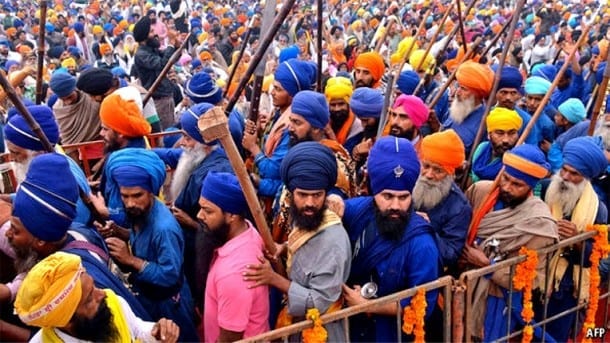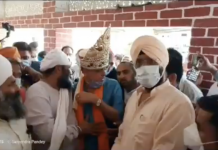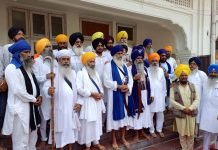What sounds like a religious schism in Punjab could be a cry for better political leadership



AMRITSAR SAHIB, Punjab—The Sikh religion provides for a gathering of believers, the Sarbat Khalsa, in times of great crisis. It was convened regularly in the 18th century, when the Mughal empire was trying to exterminate the Sikhs. But it was called just twice in the 20th century. The last time was in 1986, as a response to bloodshed that began with the Indian army’s assault on the Sikhs’ Golden Temple in Amritsar to flush out Sikh militants, some calling for their own Khalistan (“land of the pure”). It culminated in the murder of Indira Gandhi by her Sikh bodyguards and—in mob revenge—of thousands of innocent Sikhs in Delhi.
And so a tremor was felt in the state of Punjab when a Sarbat Khalsa was called for November 10th, to be held on an unassuming patch of ground outside Amritsar. Its topic was blasphemy and the desecration of the Sikhs’ holy book: torn pages had been showing up around the state for weeks. On the day itself the ground shook, when as many as 100,000 people gathered (see picture). The meeting concluded by calling for the ousting of the three high priests of Punjab’s most important temples or gurdwaras. One of the chosen replacements happens to be a pro-Khalistan separatist, in jail for assassinating a chief minister of Punjab in 1995.
Few seem happy with the Badals. Their many businesses have thrived, though little else does. Their electoral hold on the state is helped by the fact that not only are they Sikhs, like most of Punjab’s population, but they are from the Jat Sikh caste, the majority within the community. Their political opponents are in chaos. Congress, the party of the Nehru-Gandhi dynasty, is especially weak in Punjab, tarnished by the massacres of the 1980s, while myriad small parties have failed to coalesce. Yet the Badals feel sufficiently threatened by the prospect of assembly elections in 2017 that they are reaching for new sources of strength. So SAD seems to have manipulated Sikhism’s high priests into a series of reversals over a charge of blasphemy lodged against a populist preacher. Party leaders might have hoped to attract the flock of Gurmeet Ram Rahim Singh, whose self-promotional videos are wacky beyond belief; but that proved too much for their orthodox base.
In early Sikhism, church and state were figured like a pair of joined swords. In the 17th century it seemed natural that the best men should rule both worlds. But with a political leadership that looks wobbly, and an anarchic opposition, the ruling party’s control of religious authority raises stakes to an uncomfortable degree. Radicals may dream of putting a terrorist at the summit of Sikhism. Nearly everyone else just wants a better life, free of fake pesticides.





2017 elections are around the corner
Choose leadership of your choice.